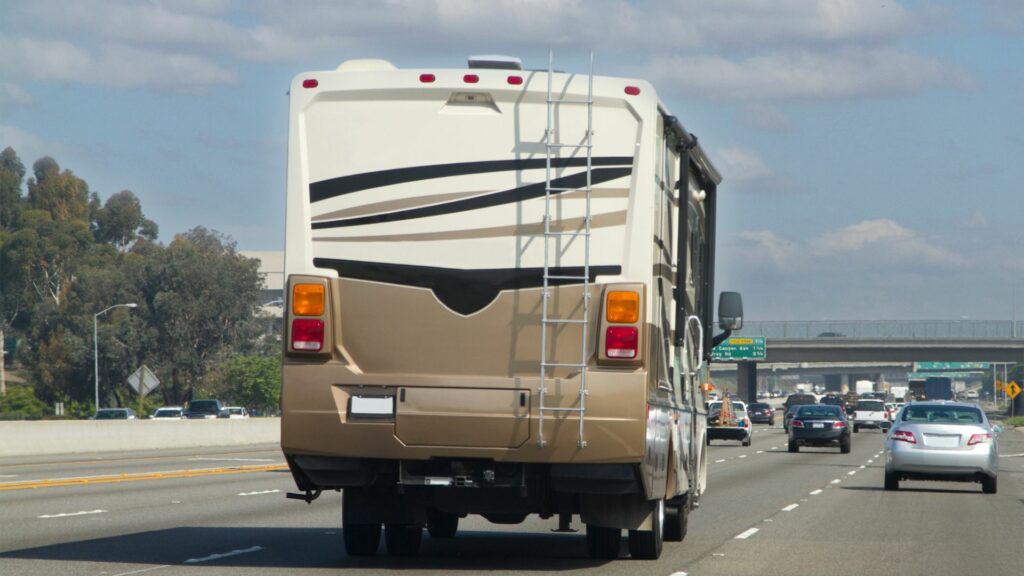Table of Contents Show
You’ve perhaps heard of the 3-3-3 Rule of RVing that helps make travel days easier and less stressful. But what about actual driving techniques to keep you and others safe? It’s not just about avoiding driving in poor weather conditions; it’s about defensive driving.
Today, we’re going to discuss what defensive driving is and also look at specific behaviors and statistics. Let’s dive in!
What Is Defensive Driving?
Defensive driving is safe driving; it’s when you pay attention to your surroundings to ensure the safety of your passengers, other drivers, and you.
You might notice a large pothole up ahead and slightly move to avoid it. You might notice a distracted driver coming up behind you on the interstate, and keep a close eye on his behavior until he passes you.
Defensive drivers use certain techniques to avoid a car crash. Although these don’t guarantee an accident-free drive, they reduce the risks. Let’s take a look at a few techniques.
What Are Defensive Driving Techniques?
While it’s important to understand what defensive driving is, it’s also critical to understand different defensive driving techniques to remain safe on the road. Obviously, behaviors like driving sober and not texting keep you more focused on the highway. But there are also other tips for becoming a defensive driver.
First, take your time. When drivers are in a hurry, bad things can happen. You may see this in other drivers. Notice if someone is coming up quickly behind you, acting like they’re late for a morning meeting.
Instead of speeding up to accommodate or slowing down to annoy, it’s a much better idea to pull over and let that person pass. Risky drivers cause accidents. Defensive drivers don’t take risks or speed.
Second, follow other cars at a safe distance. Don’t tailgate. If you’re on the person’s bumper in front of you, there’s little chance you’re stopping suddenly without running into them. About 40% of car accidents are rear-end collisions. You have quite a bit of control over this by following at a safe distance.
Finally, defensive drivers stay alert. They’re constantly looking around, noticing how other people are driving, paying attention to the road surface, and watching down the road for any potential problems.
By scanning your surroundings, you’re more likely to avoid a deer running out into the road than someone fiddling with the radio or phone or trying to eat a hamburger.
What Are the Benefits of Defensive Driving?
Defensive driving keeps you, your passengers, and other drivers safe. This is the biggest benefit. However, by staying out of car accidents or avoiding debris on the road, defensive driving can also save you money. A flat tire or a claim on your insurance will cost you a couple hundred dollars.
Your insurance may even go up the next time you renew your policy. If you have too many claims or accidents, the insurance company may drop you completely. You can also avoid speeding tickets by taking your time.
Keep in Mind: Is It Illegal to Sleep in Your Car? Let’s dive in and see!
What Are Dangerous Driving Behaviors?
Drivers of all ages engage in risky behavior behind the wheel. Sadly, 2021 saw the largest increase ever in car crash fatalities, up 10% over the 2020 statistics. Approximately 43,000 people lost their lives in vehicle-related accidents.
So, what are dangerous driving behaviors? What do defensive drivers avoid doing that risky drivers engage in? These dangerous behaviors include speeding, texting, turning the radio dial, not wearing a seatbelt, and focusing too much on the passengers instead of the road. Risky drivers are more likely to drive distracted.
But they’re also more likely to drive at night, drive while impaired, and drive while tired, which are also dangerous. A teenager coming home from a late-night party is more likely to get in an accident than an adult heading out for a lunch meeting with coworkers.
Some of this is because of the age and experience difference between teenagers and adults. But it’s also because the teenager could be impaired, tired, or have trouble seeing at night while driving.

Who Is Involved in More Accidents? Men or Women?
According to the Insurance Institute for Highway Safety (IIHS) and the Highway Loss Data Institute (HLDI), “Men typically drive more miles than women and are more likely to engage in risky driving practices, including not using seat belts, driving while impaired by alcohol and speeding. Crashes involving male drivers often are more severe than those involving female drivers.”
But since men tend to drive more miles and more frequently than women, the numbers are a bit skewed. As men and women age, the comparison is about the same. The riskiest drivers aren’t necessarily men but, more often, younger drivers.
Teenagers and young adults are involved in more car accidents due to a lack of experience, lack of defensive driving, and increased dangerous behaviors.
Older people over age 80 are also considered risky drivers because they’re more likely to struggle to see during dusk and later and have slower reaction times.
Keep in Mind: Instead of making mistakes and finding yourself in a bad situation, learn from other RVers mistakes. Click to see The Worst Situations RVers Have Driven Their Rigs Into!
How to Stay Safe While Driving an RV
When driving or towing an RV, there are a few more things to remember than just defensive driving techniques. First, stay in the right lane and drive between 60 to 65 mph.
You’ll get better fuel mileage this way and stay out of the way of speeding drivers. Plus, should you need to stop quickly, you have a better chance at 60 mph than 70 mph.
Never drive while tired. This isn’t just true for everyday drivers. When you drive or tow an RV, you have thousands of pounds behind you. If you’re weary at the wheel, pull over and take a nap. It’s not worth losing control of your vehicle, potentially causing an accident.
You also want to leave more room than normal between you and the car in front of you. A 40,000-pound motorhome can’t stop on a dime. Give yourself plenty of room to hit the brakes. You’ll also have to be on the lookout for drivers who will cut in front of you.
Since you have a larger gap, hurried drivers will likely take the opening to pass another vehicle, possibly cutting you off. You must be a defensive driver when in an RV.

Defensive Driving: The Key to Reducing Accidents
A sports team playing defense has one focus: to protect the goal. When you drive defensively, you protect yourself, your passengers, and other drivers. You’re doing your part to help everyone get to their destinations safely.
So don’t be in a hurry. Stay alert to what other drivers are doing, and don’t engage in risky behaviors like texting or driving while tired.
What do you do to stay safe on the road?






